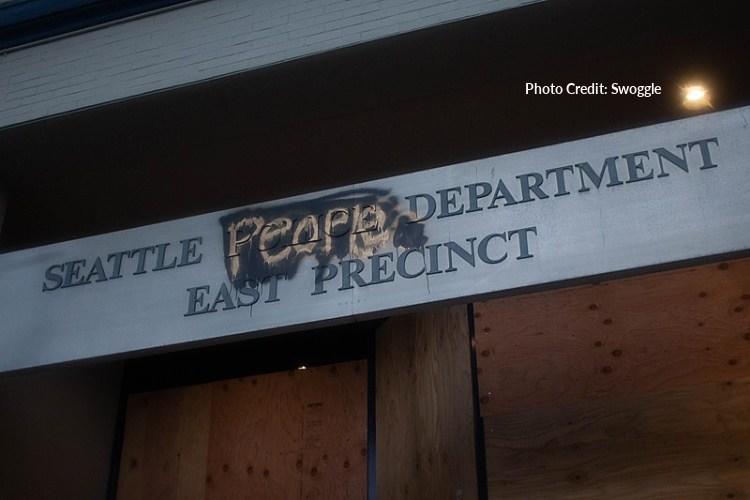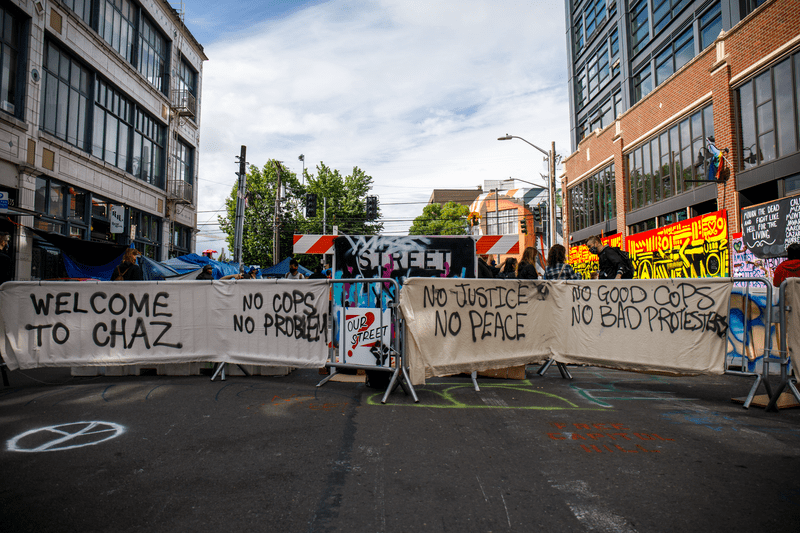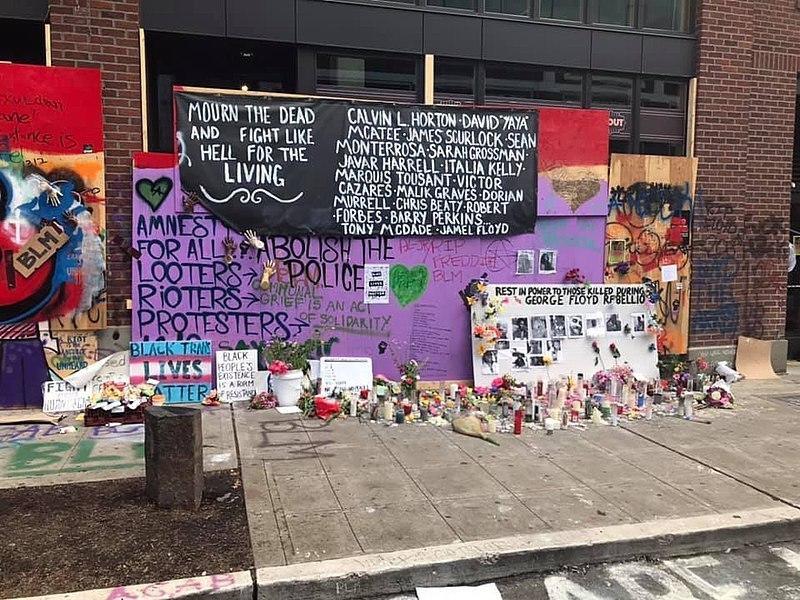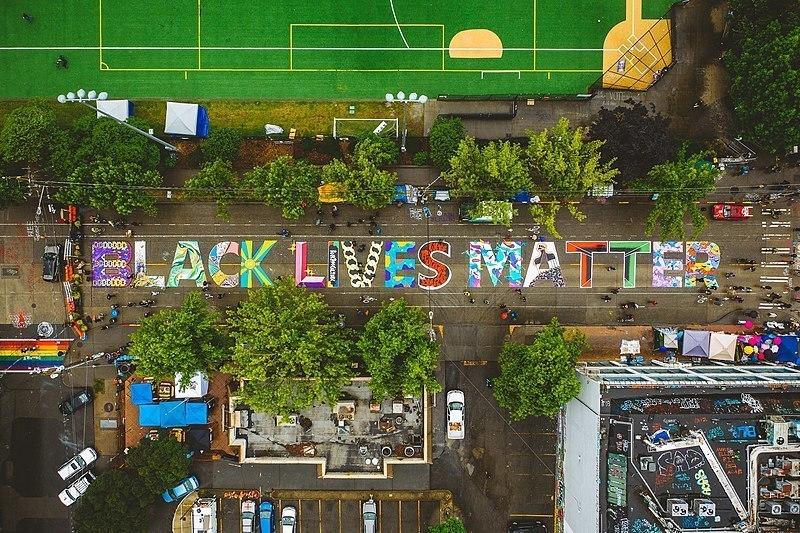Why Changing CHAZ To CHOP Is Actually A Very Big Deal
Tyler Durden
Fri, 06/19/2020 – 18:40
Authored by Toby Cowern via The Organic Prepper blog,
I just wanted to share with you a couple of thoughts that have been on my mind lately and see how it resonates with you out there. It has been very interesting for me in tracking the rioting that’s predominately been going on in the US. It’s obviously happening in other countries as well in support of the Black Lives Matter movement and other organizations emerging around their concerns of systemic racism in the US.
One thing for those reading from the US: I don’t know if you’re aware of how widespread the support for that movement and this message actually is? Even here in Sweden, we’ve seen protests occurring in different areas, as well as clashes with the police under these slogans and banners.
Protesters have taken over several blocks in Seattle.
In the US on June 8th, a group of protesters took over a 6 block area in the Capitol Hill neighborhood of Seattle, Washington. A Black Lives Matter protest escalated and the police were driven out of the local precinct. The group set up blockades barring law enforcement from entering the area and set up camp under the acronym CHAZ.
Photo Credit: Derek Simeone – Welcome to CHAZ
Within the zone, they set up a display dedicated to people who died at the hands of police and Black Lives Matter. Many buildings now bear BLM graffiti
Photo Credit: Jzesbaugh
There’s also a large street mural.
Photo Credit: By Kyle Kotajarvi
Descriptions of the area vary from it being a dangerous warzone to a utopian street fair. Politico says that Fox News is completely misleading readers and viewers and that Black Lives Matters organizers are running it, although other groups are also involved.
But it’s Fox that has been all over the story of the so-called Capitol Hill Autonomous Zone or CHAZ (which its Black Lives Matter organizers on Saturday renamed the Capitol Hill Organized Protest, CHOP): four-plus blocks of street and sidewalk in Seattle’s traditional gay and bohemian nightlife district, surrounding a boarded-up police precinct headquarters that the mayor ordered vacated last Monday to dampen a week-and-a-half of escalating confrontations between police and protesters. From there, the fluid protests, spearheaded by BLM but involving a wide spectrum of activists and ordinary citizens, coalesced with surprising rapidity into something like a provisional government. (source)
They have a list of demands, which you can read here.
The first thing that has my attention is the name change.
One thing that really stuck out in my mind happened just a few days ago. The Capitol Hill Autonomous Zone, known as the CHAZ, changed its name to the Capitol Hill Occupy Protests. So it’s now CHOP. It’s very easy to dismiss that as something very small and insignificant. I see a lot of people when they’re writing, still calling it the CHAZ, and even to the extent of some mocking the name change: with “See? They can’t even decide what they are called’ type of commentary…
Why is this important to me? Why does this get my attention?
A couple of things really.
One, it’s about seeing if people are ‘on-script’. So if people are supporting that cause specifically, how quickly do they change the vocabulary? How quickly do they adopt new terminology? How “onboard” are they with the message?
That’s important for tribal identity reasons. Tribal identity is a very important factor in the strength of the movement going forwards. The second reason it’s important is that they were losing some ground under the title of CHAZ. These occupiers were losing some PR ground. They were getting mocked, basically, because people were saying, “Well, you’re not autonomous, you know. You’ve declared this an independent state. You’re saying you’re not part of America. Autonomous should mean self-sufficient and you’re clearly not. You’re constantly asking for help. You’re constantly asking for handouts. You’re constantly asking for donations. You’re constantly asking for support, so you’re not autonomous.”
So switching to CHOP, or as another “occupy” protest, basically mutes out that public relations problem because they no longer claim autonomy.
Now that’s very slick. That’s very savvy. That’s very smart, actually.
And that goes to a deeper part of the problem.
It’s very easy to look at this as just a scraggly, ragtag bunch of people just sort of wandering around with this Utopian vision. But this small thing really shows a much deeper commitment, leadership, structure, and ability. An order has come down from somewhere and is very quickly spread throughout the key people, and then down to the ‘foot soldiers’, “This is what we will now be called and this is why.”
Now we can look at it as a kind of PR swing, which in and of itself would be quite worrisome that they can be so on-message. But in addition to this, we should note how quickly the change was implemented, communicated, and adopted.
But then what’s really captured me is the name: Capitol Hill Occupied Protest.
Do you remember Occupy Wall Street?
The Occupy Movement gained strength from the back of the financial crisis in the last decade, and notably from 2009, swelled. You may remember, the political slogan was, “We are the 99%.” It peaked in 2011 with the Occupy Wall Street movement. So the Occupy movement is much much, much bigger enabler and tribal identity. In fact, there were Occupy movement protests through 2010 onwards in 31 different countries, and most of those were major Western countries.
So this is now basically allowing, tempting, and goading those people who identified with the Occupy movement to join and rally around this cause. There may have been a small sort of core key group, perhaps Antifa-type in the beginning, getting the boots on the ground, actually, performing the occupation, and now they can broaden out and become more widespread.
I think we’re going to see a very sharp consolidation of the power base of this movement and you’re going to see a massive increase in the ranks.
This is notable for me in two different ways.
One is timing. As of publication, it’s June the 19th. So you’re just two weeks short of July the fourth, or America’s Independence Day, which is obviously a massively iconic date and not only in the US. It’s interesting again, that a lot of Western countries have sort of adopted their own July 4th variation. It’s not exactly a worldwide holiday, but certainly a day of note. In two weeks, a lot can happen. We’ve seen that often this year. It’s enough time for major additional plans to be put in place and so this 4th of July could be very eventful.
Then there’s the second point that’s gotten my attention.
Think back to 2009-2011 – this was the real peak of the Occupy movement. We’re now in 2020. We’re nine years on.
So those young, idyllic people that were the main rank and file of that movement are 10 years older now. Those who were quite high profile students from good universities were getting behind this, what positions are they in nowadays? They’re going to be sitting at mid, or high-level management in major corporations. They’re going to have a whole other sphere of influence.
Or they might be on the city council.
A Seattle City Council member, Kshama Sawant, was part of the original Occupy Wall Street protests and is also part of this one.
While the protest does have some loose leadership, there are few formal structures. Sawant compares the space to the “Night of 500 tents” during the Occupy Wall Street movement in Seattle in October 2011, of which she was a part. Back then, Occupy protesters were able to drive police from their space before police returned and cleared out the area where the protests took place.
Already, said Sawant, CHOP has outlasted what they were able to achieve with that Occupy action, which only lasted three days. But she said she expects police to clear the area sometime in the near future. “I don’t think that we can in any way assume that the police will not come back and specifically attack this space,” she said. “I think we should expect that that could happen at any moment, because that’s exactly what happened in Occupy.” (source)
No longer is this about wearing a funny t-shirt and waving a flag on the street and feeling the reward of being ‘part of the crowd’ anymore. These people have progressed into places that they have major corporate clout.
And that leads to funding.
In the last week, there is something that has been notable in a way that I can’t say I’ve seen before with any of the previous campaigns. And that is how many major companies are openly pledging their support, either specifically for Black Lives Matter, or for affiliate organizations.
I’m not getting into the rights and wrongs of tackling racism. That’s not what this post is about. This is about identifying and really highlighting to you how keeping an eye on the big circle is worth it. These kinds of moments should get your attention.
Now we’re looking at major corporate identification, either through genuine backing of the cause, societal pressure, or the perception of societal pressure. I imagine that people in boardrooms are saying, “If we don’t get on board with this campaign, we really risk running a loss here or hurting our bottom line or affecting our sales base,” whichever the case may be.
Virtue signaling now begins to transform into more tangible corporate action. The key thing I’m seeing in the emails that I receive is donations. Big companies are saying. “We support this cause and we’re actively putting money into it.”
And it’s significant sums, like $50,000 a week, $100,000 a month, a one-time donation of $250,000. So not only are we seeing an increase in the number of participants, we’re seeing a massive increase in funding. And I do believe there was already significant funding for these organizations anyway.
This is all piled onto a situation that clearly has concise and controlling leadership behind it.
We’re trending toward a perfect storm.
I read a huge amount of news on a daily basis just to kind of track everything from China to America, and everything in between, locally, upscale, and downscale. When something really gets my attention, it is leaping out of a massive information maelstrom.
What I’m trying to highlight here is more of a thought process. You need to consume the news but not be consumed by it. But allowing yourself to absorb a wide stream of information from broad and varying sources gives you the chance, every now and then, too see how certain ‘key things’ fit together and gives the possibility of better trend assessment and therefore, a prediction.
I’m not going to say this is perfect storm territory yet, but it’s definitely trending in that direction. It’s something that I’m keeping my eye on more and more. I just wanted to share with you a little bit of what was going through my thoughts in the last two or three days.
What I’d love on this particular issue is for you to please comment below if you’re seeing the same things? Are you getting those emails from companies pledging support? Are you hearing from work colleagues or friends or family that this is a movement they’re increasingly getting behind and they feel that they need to do something? Where is everybody else out with this?
And this isn’t just an American question. Again, go right back to the beginning. These movements are occurring in different countries at various levels of tenacity. And we’re definitely seeing the spread.
So wherever you’re based, please do share your observations, if you care to, in the comments below. Thank you so much.



